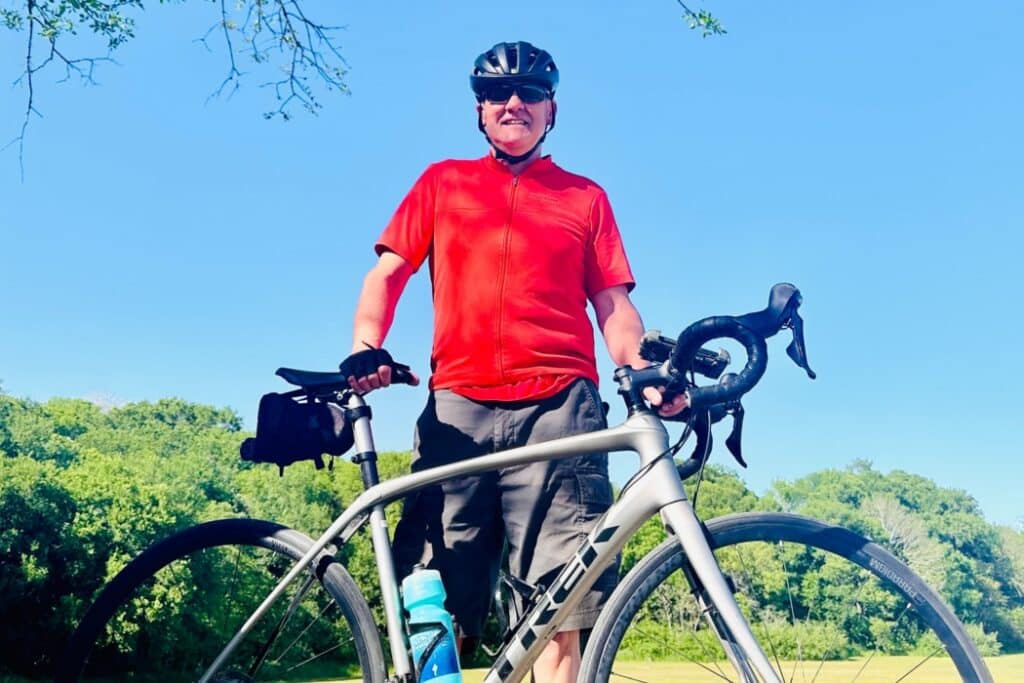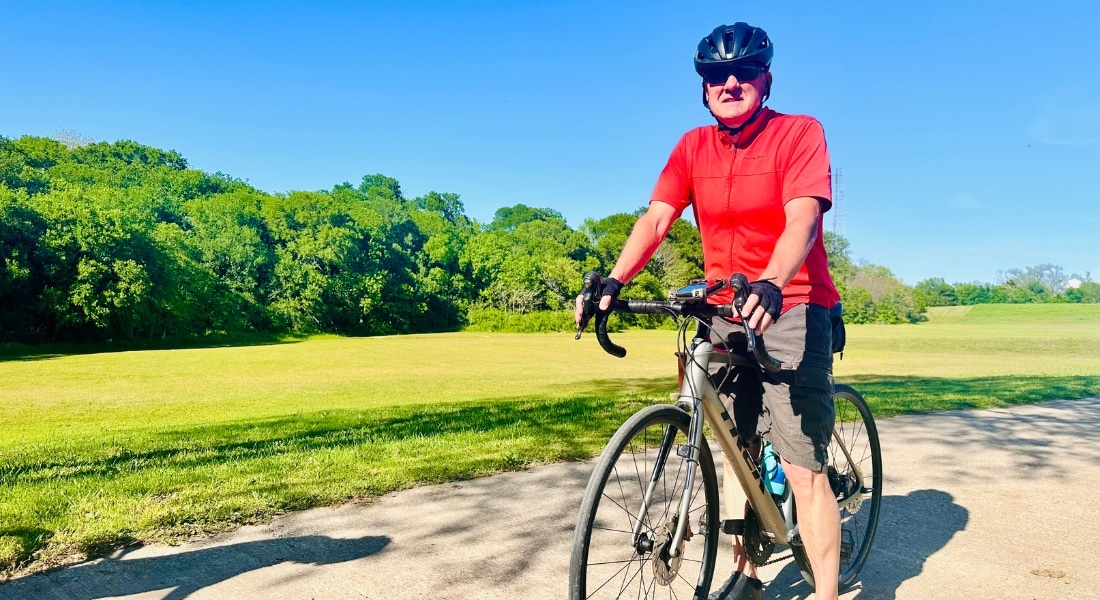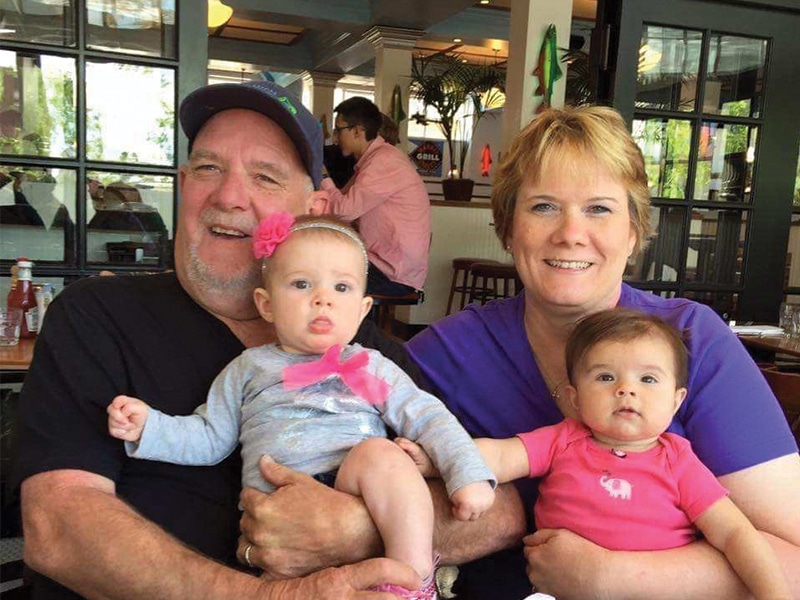Ed Ofria is at his happiest when he’s riding his bicycle, but thousands of miles had taken their toll on his 65-year-old hip joint.
“I had no range of motion in my left leg,” Ed says. “It got really bad.”
The road ultimately led Ed to Methodist Richardson Medical Center and a hip replacement surgery performed by a kindred spirit: Diane S. Litke, MD, orthopedic surgeon on the medical staff, and an avid cyclist in her own right.
“Since we share a love for it, we got to chat a lot about that during his office visit,” Dr. Litke says.
For the last 20 years, Ed had been averaging about 20 miles a day on his bike.
“It’s physically and mentally therapeutic,” he says.
However, before his surgery, cycling had become more of a chore as Ed developed osteoarthritis in his hip.
Things went from bad to worse as the pain eventually moved to his lower back, limiting his mobility and causing pain.

ANTERIOR APPROACH
Initially, Ed contemplated treatment methods such as corticosteroid and hyaluronic acid injections, which help to restore the joint’s natural gliding motion.
“I explored other potential alternatives, but there really aren’t any long-term options,” he says.
He made the decision to have total hip arthroplasty on June 8, 2022.
Dr. Litke performed the surgery using the minimally invasive anterior approach, allowing for a smaller incision and a faster recovery.
“We enter through the front of the hip, which limits the cutting of muscles and decreases the chances of dislocation,” Dr. Litke says.
Six hours after the surgery, Ed was discharged from the hospital.
From sports injuries to chronic conditions, our orthopedics team offers you complete care to relieve pain and restore your active lifestyle. Learn more at MethodistHealthSystem.org
ONLY THING HE MISSED
Ed was able to walk out of the hospital after surgery, although he would need the help of a walker for the next couple of weeks. What pain there was turned out to be manageable, he says.
“I fought through a lot of throbbing,” Ed says. “It gets into your head a little bit because I’m an active person.”
He became anxious to get back to cycling around the five-week mark and started to ask about the timeline. Dr. Litke was happy to set his fears to rest.
“I was eager for him to know that he could go back to riding safely in due time,” she says.
After a hard-fought eight weeks, Ed was able to resume cycling and get back to his everyday routine.
“It was what I missed more than anything,” he says.

GOOD AS NEW
Ed was back to being active within a few months, and a year later he felt like himself again. He’s now back to working in his garden and cycling pain-free.
“The surgery is typically expected to last 20 to 30 years,” Dr. Litke says. “The aim is to never have to do it again.”
Feeling good as ever, Ed credits Dr. Litke and Methodist Richardson for getting him back on the trail with his new hip.
“She was very efficient, communicative, and had a nice staff that was great,” he says. “I have nothing but positive feedback.”






